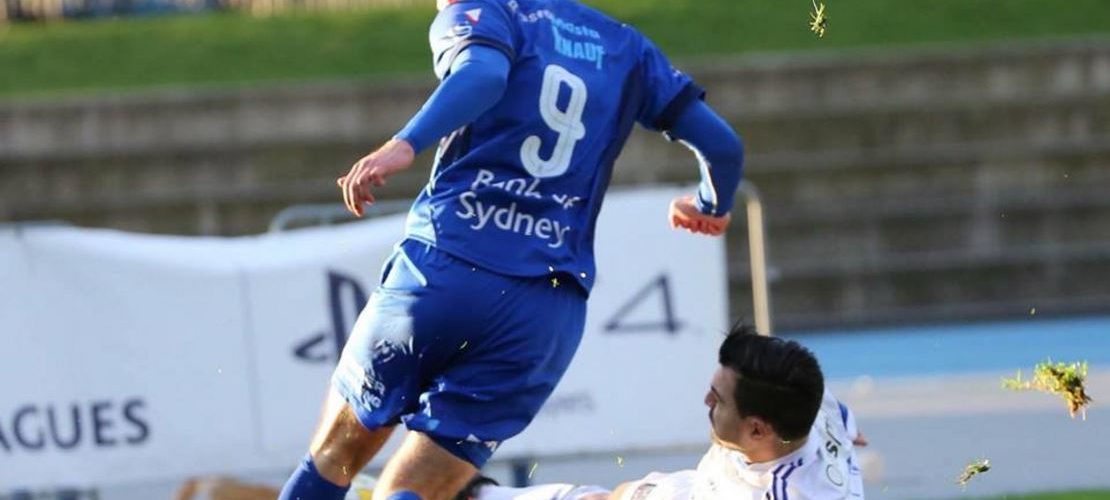Image: Peter Psarros
Next July will mark a decade since the international retirement of Mark Viduka – arguably the greatest goalscorer in Australian football history, and perhaps even the finest player this country has ever produced.
For those old enough to remember the V-Bomber in his prime, words such as lethal, clinical, prolific, deadly and destructive come to mind to describe the player who netted 92 league goals in 240 Premier League games.
Few could forget his hat-trick for the 10-man Melbourne Knights on a rain-soaked night at Olympic Park in April 1995, which catapulted his side to a Grand Final berth at the expense of rivals South Melbourne, nor the four-goal haul to dismantle Liverpool on a sunny November’s day at Elland Road in October 2000 while playing for Leeds United.
However, the post-Viduka era has seen Australian football unable to find a successor to Dukes, with out-and-out number nines becoming an increasingly rare commodity across the country.
A closer look at the A-League reveals an alarming trend, with only two of the 10 teams boasting a first choice striker who is homegrown (Brisbane’s Jamie Maclaren and Kerem Bulut of the Western Sydney Wanderers – the latter now on the outer with coach Tony Popovic).
The likes of Guardiola, O’Donovan, Fornaroli, Berisha, Keogh and Bobo have produced plenty of quality so far this term, but their presence as front men highlights a reluctance to entrust Australians in that role.
However, it wasn’t always like that. The NSL was littered with many exceptional goalscorers with names like Gary Cole, John Kosmina, Eddie Krncevic, Doug Brown, Graham Arnold, Frank Farina, David Seal, Damian Mori, Ante Milicic, David Zdrilic and Saso Petrovski being noteworthy local goal-machines.
Yet the decline of the Australian striker doesn’t seem to be just a problem in the A-League, with the second-tier NPL competition facing similar problems.
With every passing pre-season, many clubs across the league particularly here in Victoria experience trouble when it comes to recruiting front men who guarantee goals.
The centre-forward position, along with the problem left-back role, are two spots on the team roster many coaches throughout the league struggle to fill.
While the left full-back position allows many coaches to utilise right-footed full-backs, left wingers or versatile central midfielders in the role, the ability to convert a non-number nine into one is much tougher given the instinctive nature of goalscorers.
Here too, many clubs elect to go foreign when signing strikers, with a handful of clubs in the Victorian top flight electing to utilise their two visa spots on non-naturalised players born outside of Australia.
This poses a question of whether the lack of quality centre-forwards in Australian football has something to do with the youth development process, which has undergone substantial reform in the past decade with the adoption of the 4-3-3 system paramount at elite youth level.
One man who certainly believes that to be the case is South Melbourne manager Chris Taylor, who has four-time reigning Golden Boot winner Milos Lujic as his number nine at Lakeside Stadium.
In his last four seasons the tall target man has netted 92 league goals in just over 100 games, yet many consider him unsuitable for the A-League because his perceived work ethic is considered lazy.
Yet Taylor refutes the Australian football psyche which prioritises strength and pace and has a mistrust of players who don’t run as much and don’t backtrack, revealing he tactically deploys Lujic solely in goalscoring positions rather than out of position chasing defenders.
“Without going into the nitty-gritty, but with this 4-3-3 system, we have a lot of nice players who are good on the ball and can play in wide areas,” Taylor said in a February 2015 post-game interview.
“But at the end of the day, strikers earn their money for scoring goals. We have one of the best in the business at South in Milos but league-wise there aren’t too many players who score over 10 goals a season, and gone are the days where you would get strikers who would hit you 20-to-30 goals a season.
“It’s a dying art which needs to be brought back into the game,” concluded Taylor.
One just has to look at the Victorian capital’s premier club side in Melbourne Victory to see the lack of a production line of forwards in recent years.
Mehmet Durakovic’s youth side from the beginning of the decade had a number of forwards, many of whom were considered to be traditional number nines, with all but one of them falling off the footballing map as years of being overlooked, in addition to ongoing injury heartaches, have led to their exodus from the game.
The likes of James Kalifatidis, Damir Lokvancic, Jake Nakic, Luke O’Dea, Jason Ricciuti, Anthony Selemidis and David Stirton were all heralded as the next batch of exciting young strikers knocking on the door of the first team. All bar Stirton – who features for NPL side Port Melbourne Sharks – are no longer involved in the game at a professional or semi-professional level.
It’s a concerning state of affairs for a club which once had the best local strike partnership since Mori and Despotovski in the early years of the A-League in Danny Allsopp and Archie Thompson.
Brisbane Roar striker Joey Katebian had an exceptional record with the Victory Youth team, having netted 42 league goals in as many NPL games in a 15-month period stretching from February 2015 to May 2016, but despite this impressive goal ratio, found first-team opportunities limited.
A 90th minute cameo in a 2-1 home win against the Central Coast Mariners in November of last year was Katebian’s only league appearance for the club.
On a night when Victory were missing the predatory Besart Berisha and Archie Thompson through injury, one would have thought Kevin Muscat would’ve have given Katebian his chance to shine.
However, the former Victory captain decided to field attacking winger George Howard at the pivot of his front three, with the English-born Howard replaced by another winger in Connor Pain in the 69th minute.
Katebian entered proceedings following Matt Sim’s late goal for the Mariners, which had reduced the deficit as the away side went in search for another goal.
Seemingly tasked with holding the ball up and not giving away possession, the then-20 year-old attacker decided to take the game into his own hands with his first touch by creating a goalscoring opportunity for himself, with his goalbound shot blocked by a Mariners defender.
In his brief cameo appearances off the bench for the Roar this term, the direct Katebian has continued his search for an elusive A-League goal, going close on a couple of occasions, as well as setting up gilt-edged opportunities for teammates Brandon Borrello and Thomas Broich in respective games.
Since the glory days of Viduka, football fans across the country have pinned their hopes on a number of hopefuls to be the big man’s successor in leading the line up front.
Yes, Tim Cahill has done a serviceable job up front, and has a distinguished goalscoring record for his country which his former Socceroos captain never did, but the notion of an Australian goalscorer extraordinaire has become something of a persona non grata in recent years.
Players such as Scott McDonald, Apostolos Giannou and Tomi Juric have spent the formative years of their football development in foreign lands, while Eli Babalj’s career has been curtailed by injury.
Too often are local strikers and instinctive poachers pushed out wide when breaking into A-League first teams to accommodate foreign frontman.
Think of the likes of Bernie Ibini, Corey Gameiro and Adam Taggart, who were all centre forwards at the beginning of their senior careers, but have all reverted to roles out wide.
Current Green Gully coach Arthur Papas, who had previous roles with Melbourne Heart and Newcastle Jets – and in India – with first-hand experience in the youth system, disagrees that the problem lies with the formation, rather the lack of trust placed in inexperienced strikers in Australia.
“I refuse to buy into arguments about the fact that most junior/youth teams are now playing 4-3-3 as the reason this now doesn’t develop number 9’s. If this was so factual, then considering over 65% of the top european academies employ the same formation in their youth academies, why are they not having the same difficulties?” he says.
“A-league is very different to the NSL, in which Australian players were given opportunities much earlier in their careers. By simply looking across the A-League its vary rare that clubs will place trust in a young up and coming No.9 to lead their attack and instead a visa spot is used in this area almost certainly.
“Look further and you will discover this is a problem across all of Asia for the exact same reason, and a key element often overlooked in development is opportunity at the right time in ones career.”
This is exemplified by the case of Brent McGrath, a one-time Socceroo from Brondby who was only afforded an injury-replacement contract with Adelaide United, dropped down to the NPL with Bentleigh Greens, before resuming his career in Europe via Asia where he now plies his trade with Esbjerg in the Danish Superliga after establishing himself in the second tier with FC Fredericia.
In the national team, Joshua Kennedy was primarily utilised in a superb sup role, while the likes of Kewell and Cahill, and later Burns, Kruse, Leckie and Troisi, were preferred at the point of attack.
While number nines such as Robert Lewandowski, Gonzalo Higuain and Diego Costa are revered the world over, Australian football’s perceived neglect of the position means that the legendary feats of Viduka won’t be easily replicated any time soon if the status quo does not change.

